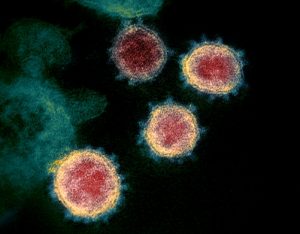“Active coronavirus has been found in faeces, so sewage discharge into rivers where people swim, especially in these hot weather conditions, is potentially lethal.”
.
Back in May last year, the Smithsonian magazine was saying we need not be too worried about untreated sewage entering our river systems:
The virus that causes COVID-19 is unlikely to remain active in sewage, but its genetic material can still help researchers identify at-risk communities…
Can COVID-19 Spread Through Sewage? | Science | Smithsonian Magazine
.
A report by the UK Environment Agency in September 2020 echoed this understanding – but that there was still much more research to be done:
The Environment Agency is working in partnership with Bangor University to monitor levels of SARS-Cov-2 viral material in waste water. Since viral RNA fragments are shed in faeces, it may enter watercourses through sewage discharges of septic tanks, small and large treatment works and combined sewer overflows. The viral material itself is not infectious, but the results of this work will help public health experts understand levels of infections in the general population.
State of the environment: health, people and the environment – GOV.UK
.
However, as reported by the surfing community, referring to the very latest findings given in the Water Research science periodical, the virus can in fact remain viable and infectious in seawater:
 While there are still notable research gaps, the general consensus is that the COVID-19 virus might be transmittable through the “fecal-oral route”. This means that recreating in sewage polluted waterways could put you and your loved ones at risk of getting sick from a wide range of fecal-borne illnesses in addition to, potentially, COVID-19. Though that risk is considered low due to the rapid inactivation of SARS-CoV-2 in recreational waterways. As always, please check your local beach water quality before heading to the beach…
While there are still notable research gaps, the general consensus is that the COVID-19 virus might be transmittable through the “fecal-oral route”. This means that recreating in sewage polluted waterways could put you and your loved ones at risk of getting sick from a wide range of fecal-borne illnesses in addition to, potentially, COVID-19. Though that risk is considered low due to the rapid inactivation of SARS-CoV-2 in recreational waterways. As always, please check your local beach water quality before heading to the beach…
A March 2021 Study is the first to publish results about the viability of SARS-CoV-2 in seawater, confirming that the virus can in fact remain viable and infectious in seawater, but just for one to two days pending on water temperature. Lower temperatures resulted in a longer decay rate than higher temperatures. The same study found that the virus can remain infectious in river water for slightly longer, ranging from two to four days pending water temperature.COVID-19 and Beach Water Quality: Updates from the Research Community – Surfrider Foundation
Decay of infectious SARS-CoV-2 and surrogates in aquatic environments – ScienceDirect
.
And these findings are being corroborated in other recent research:
The COVID-19 pandemic and its implications on the environment
.
The general issue of untreated sewage entering our water systems is of course an international problem, as the WHO points out:
Faecal pollution and water quality | who.int
.
However, this is particularly worrying, with the latest report from the Environment Agency highlighting how much untreated sewage has been entering UK water systems – in particular in these parts:
.
And this has been happening repeatedly:
Sewage island: how Britain spews its waste into the sea | Water | The Guardian (2021)
South West Water: pollution, floods and profits – Corporate Watch (2017)
.
A local commentator sums up the current situation:
“Active coronavirus has been found in faeces, so sewage discharge into rivers where people swim, especially in these hot weather conditions, is potentially lethal.”